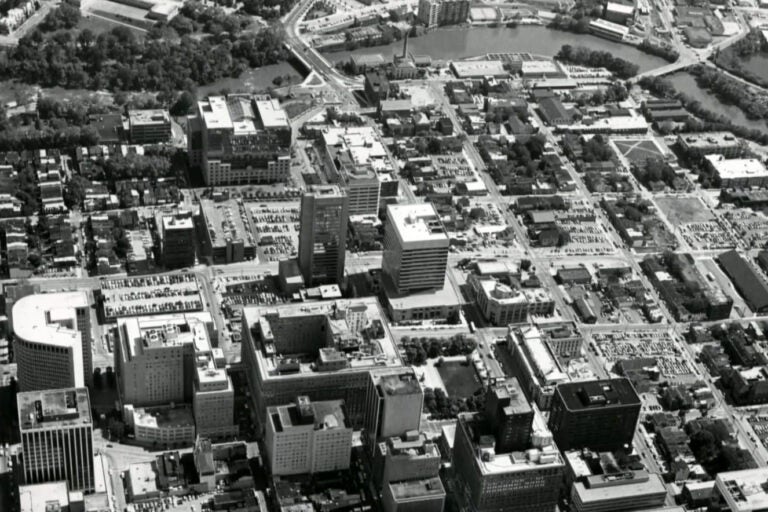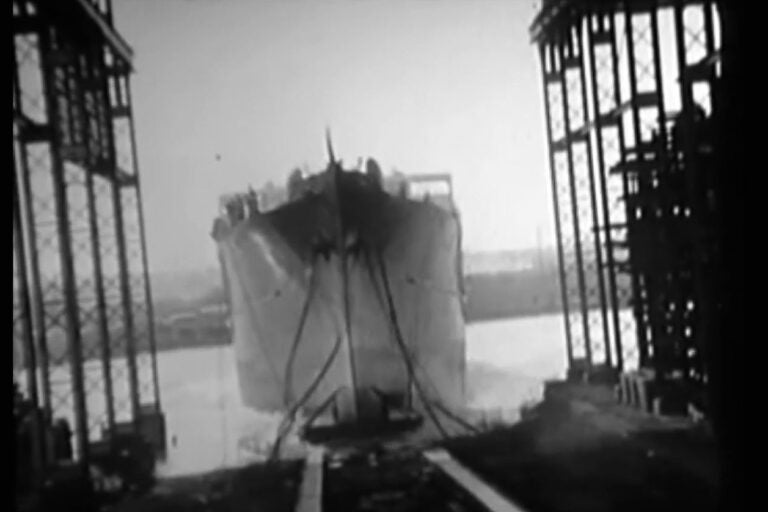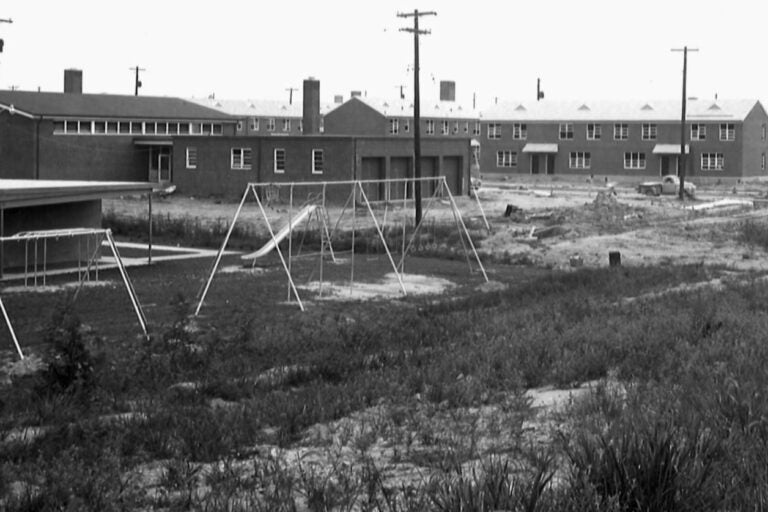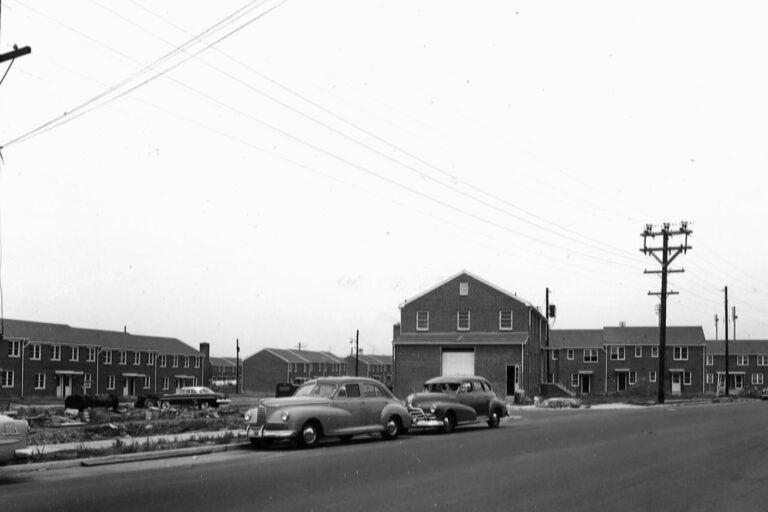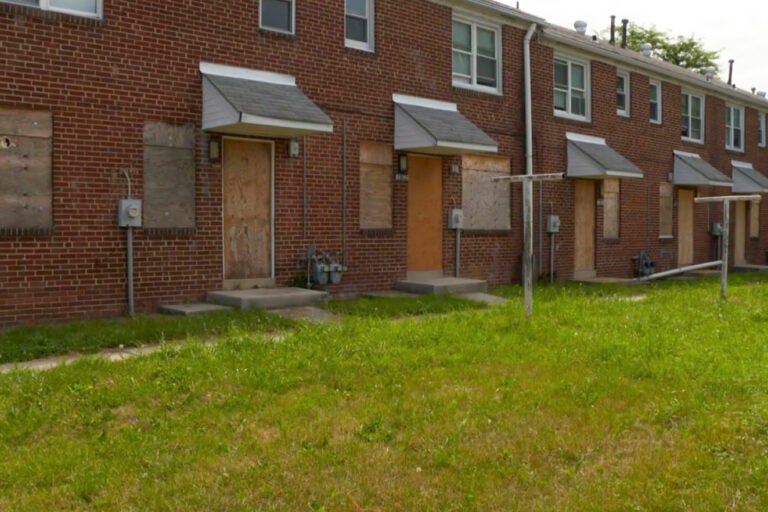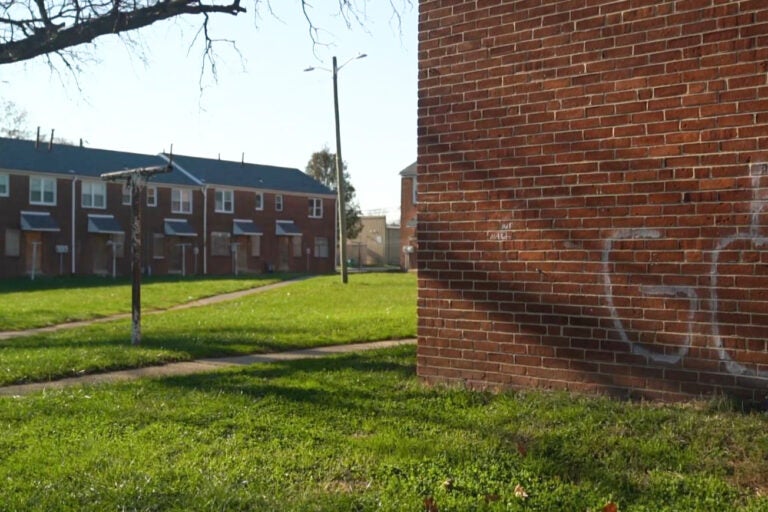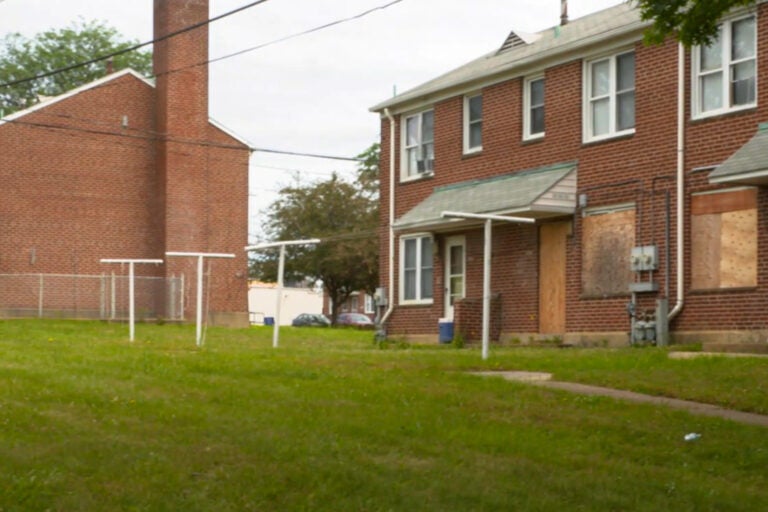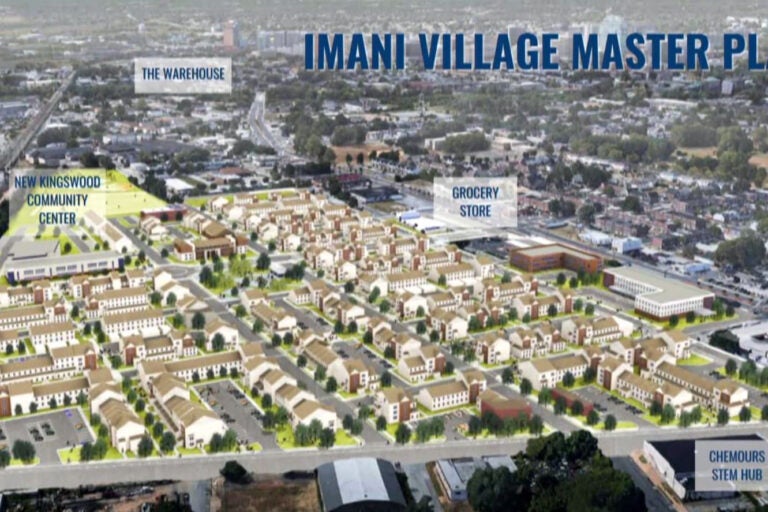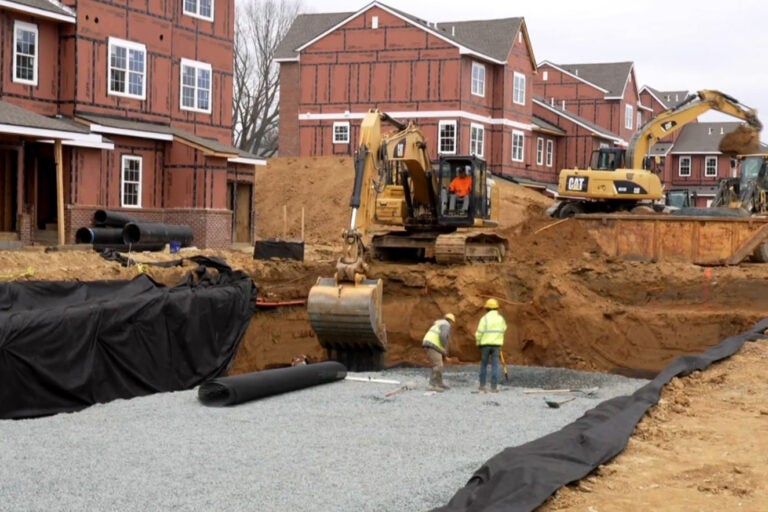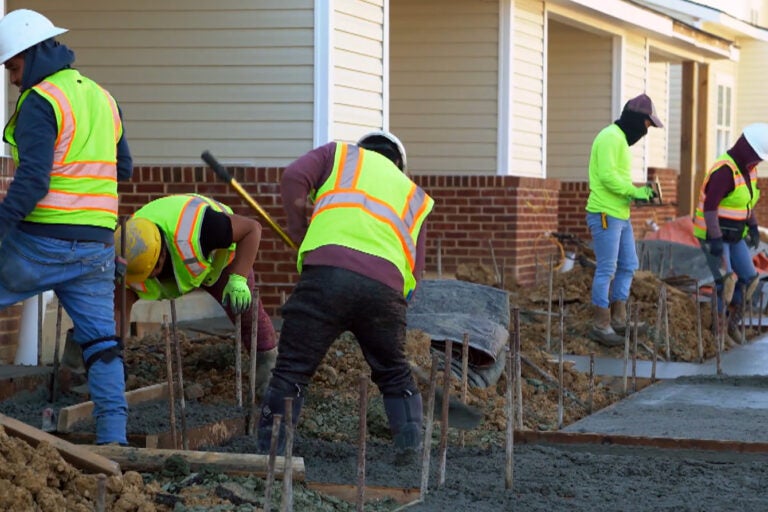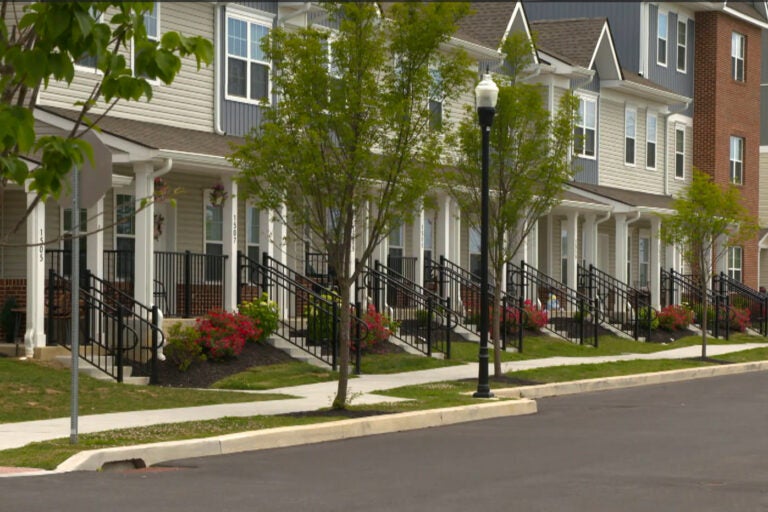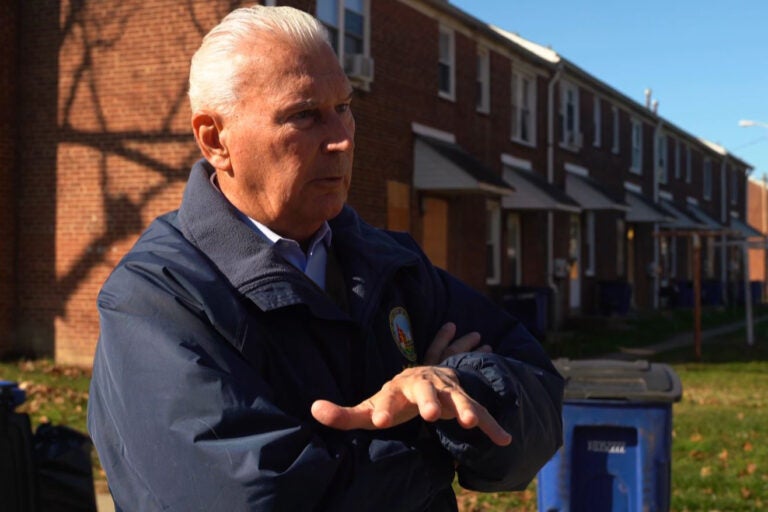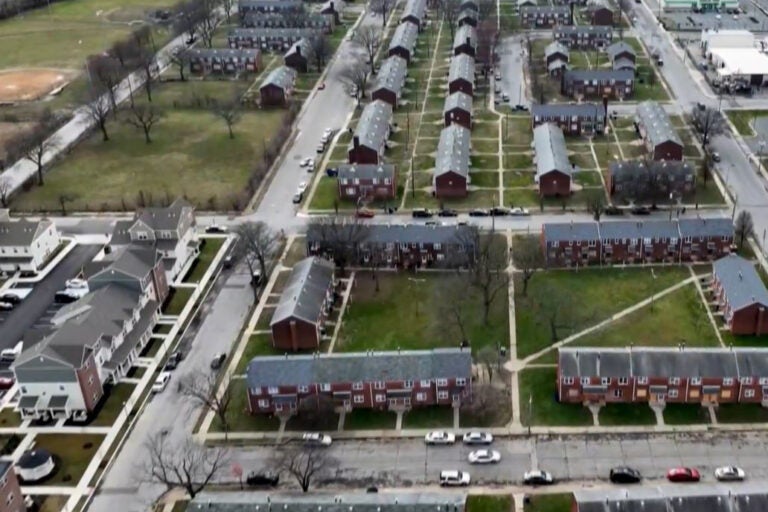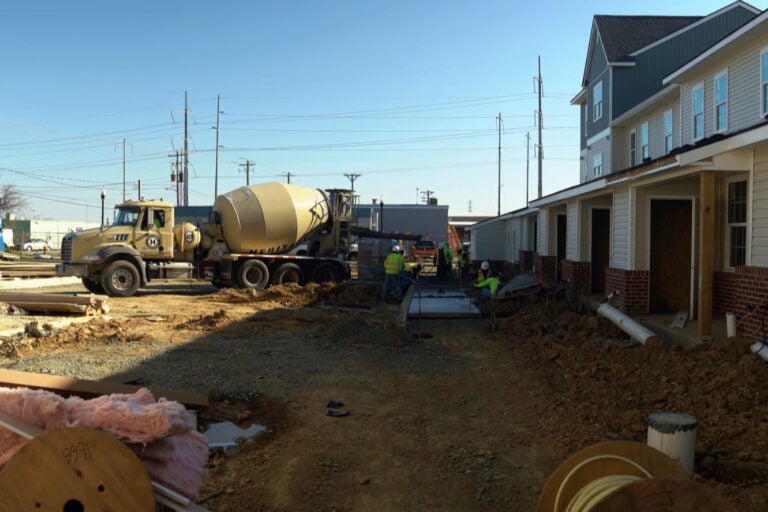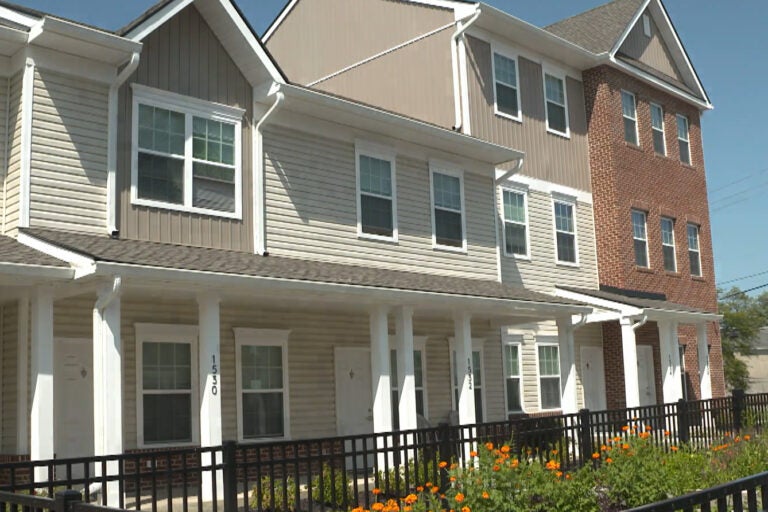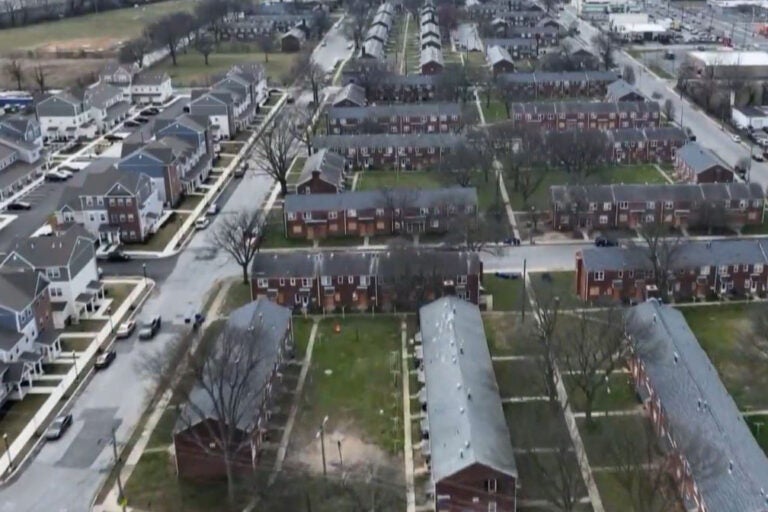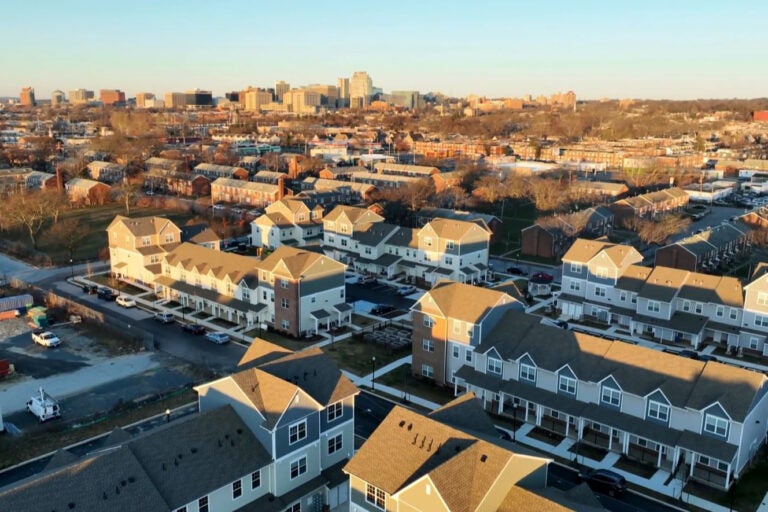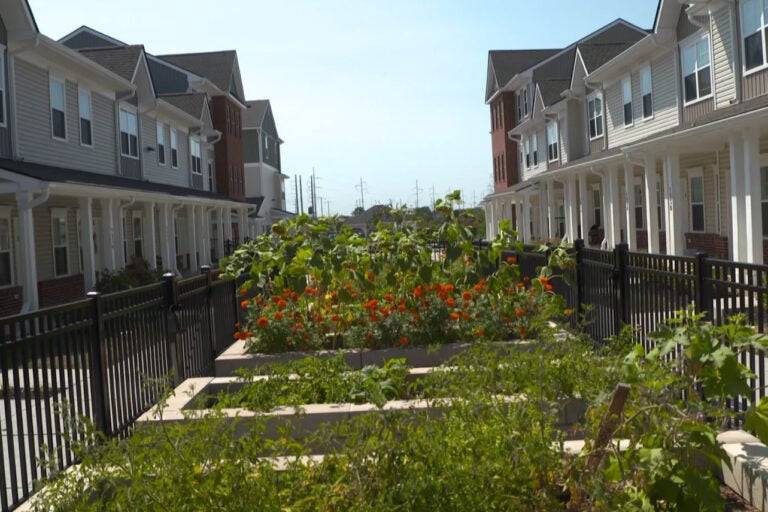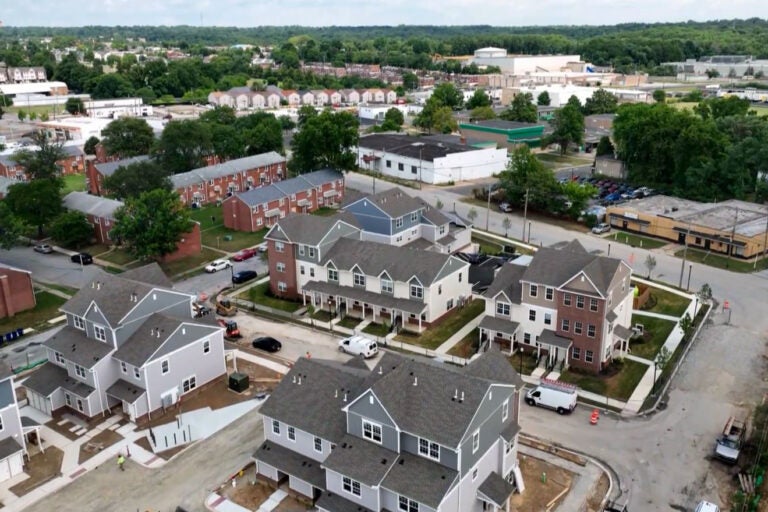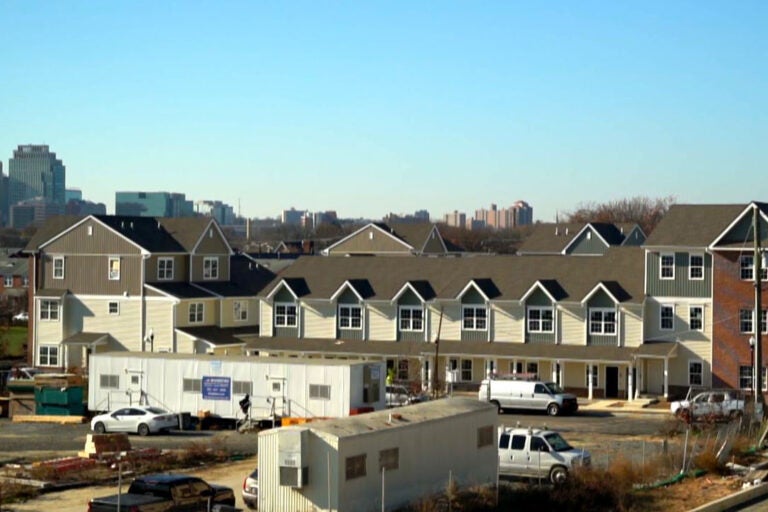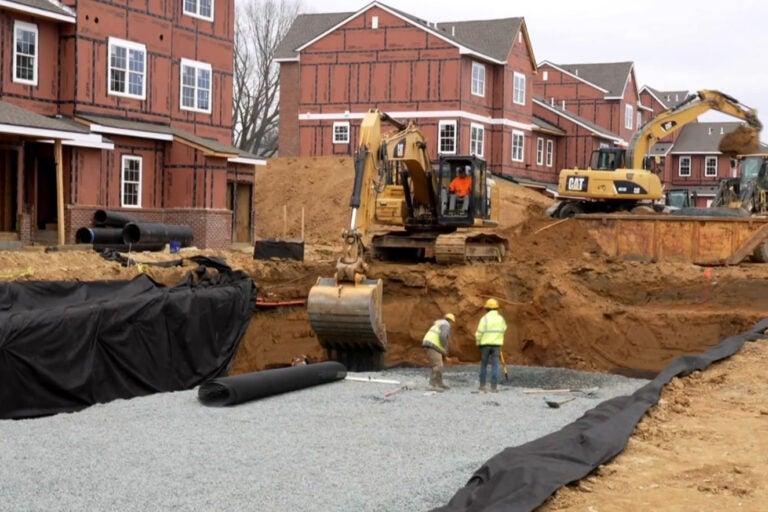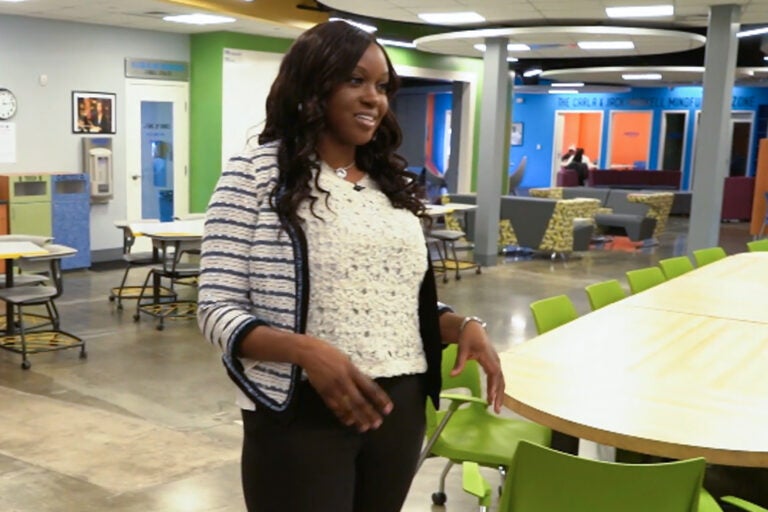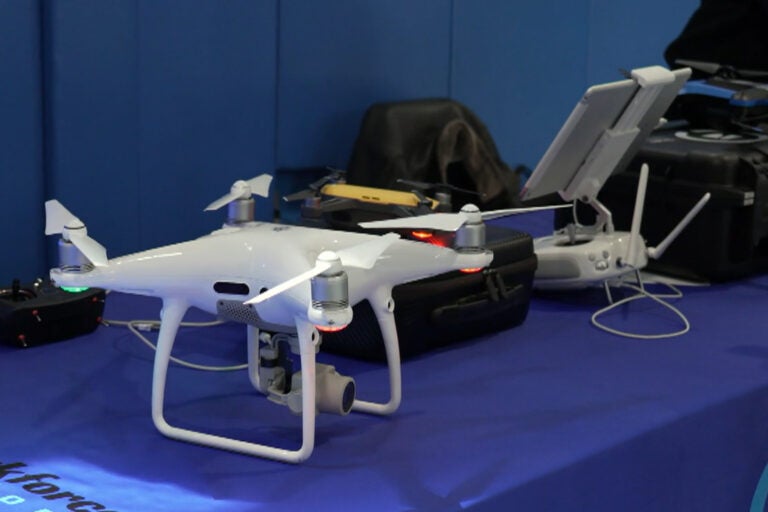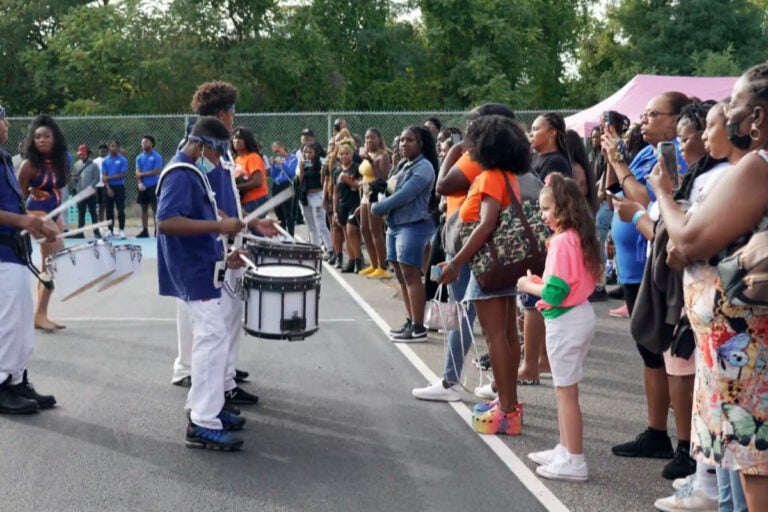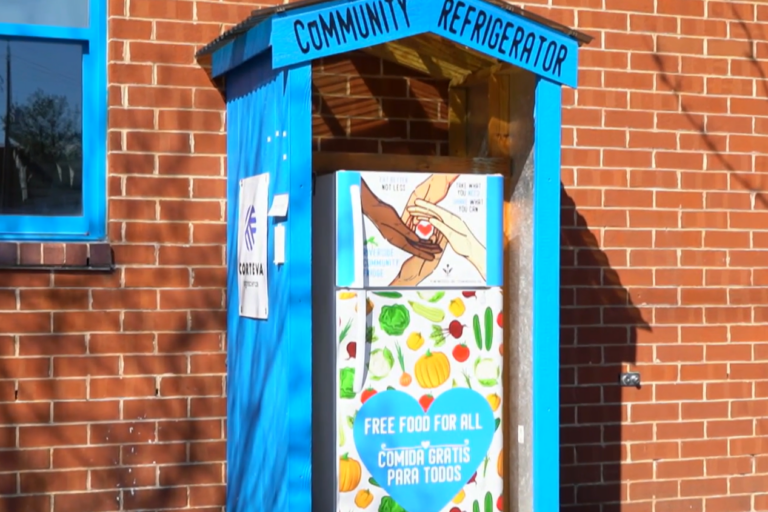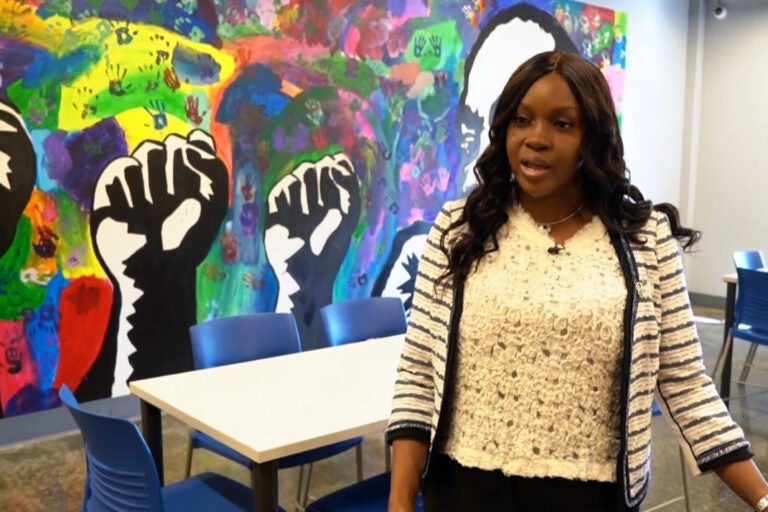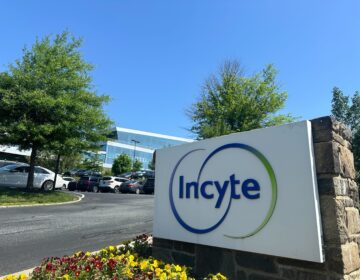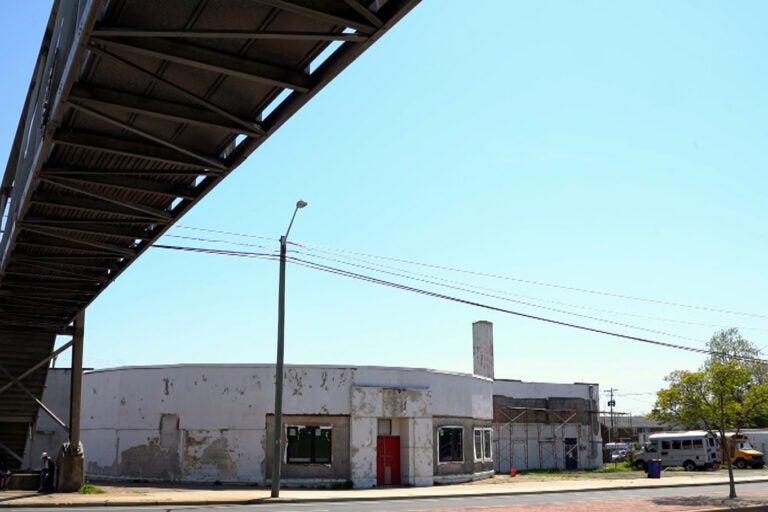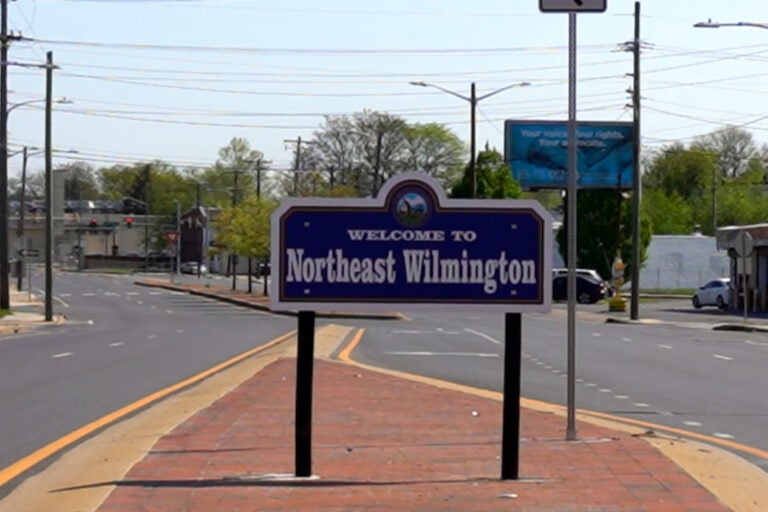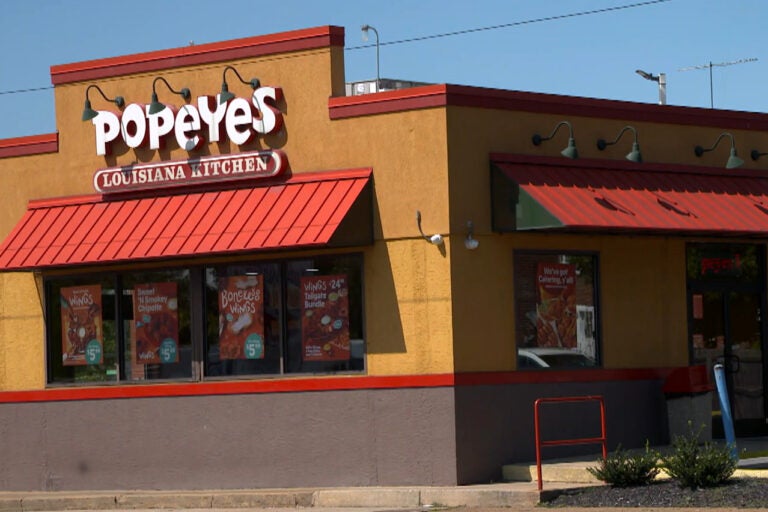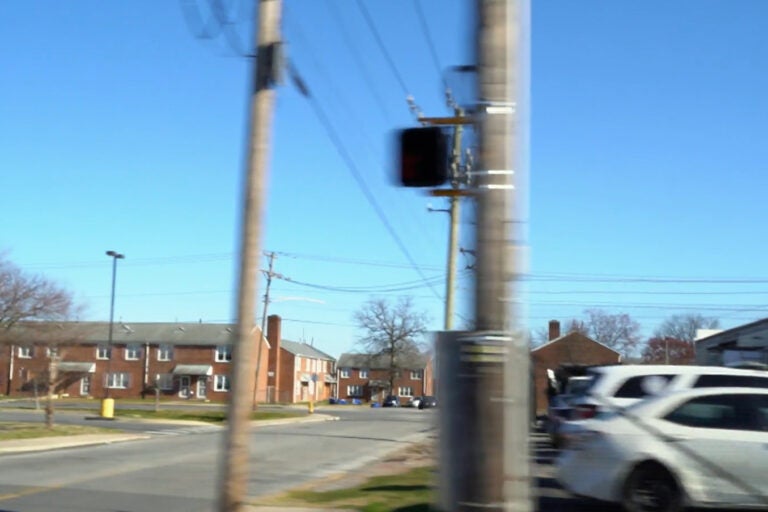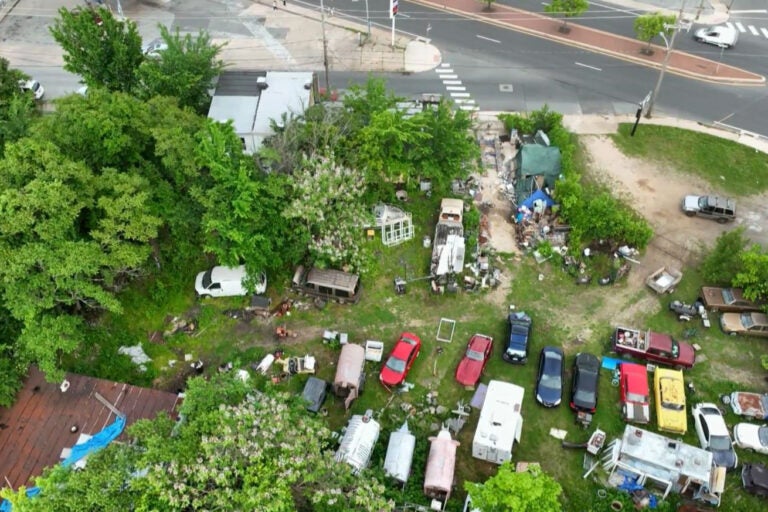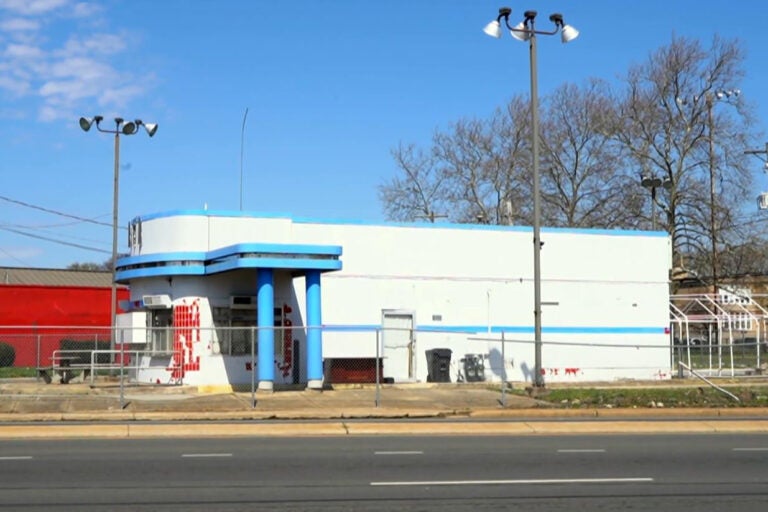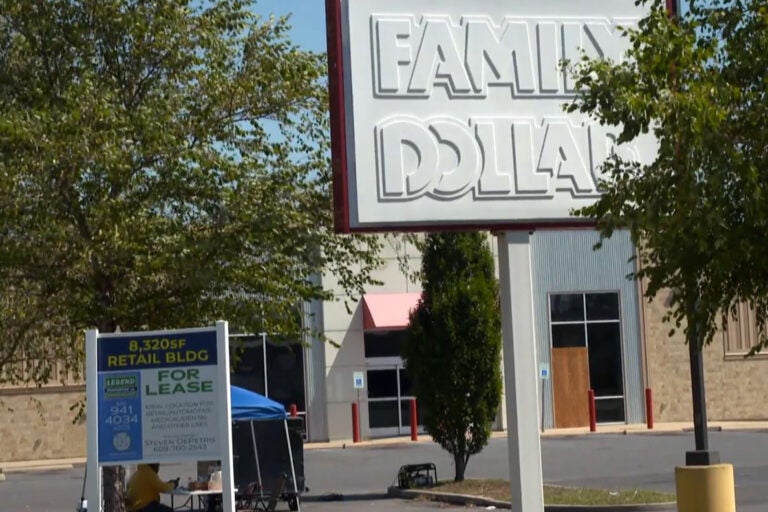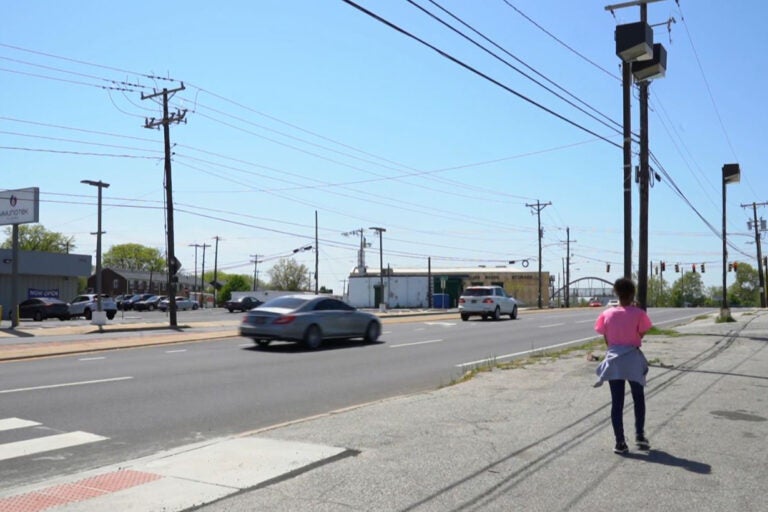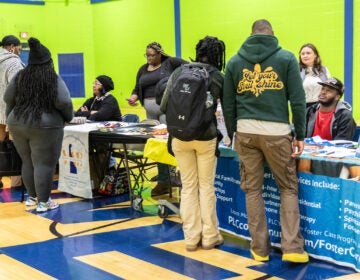‘Like a new planet’: Inside the monumental effort in Wilmington to ‘Resurrect Riverside’
The 10-year reclamation project in a once-thriving corridor of northern Delaware is chronicled in a new documentary from WHYY News.
From Philly and the Pa. suburbs to South Jersey and Delaware, what would you like WHYY News to cover? Let us know!
There are lots of roadways in and out of Wilmington, Delaware.
Thousands of commuters use Interstate 95, which bisects the city of 72,000 people. Other visitors to town use roads that weave through smaller towns or the suburbs.
Yet one former major artery is hardly ever used.
That’s Northeast Boulevard.
The two-mile stretch that parallels the Delaware River has deteriorated for decades.
Once-thriving auto dealerships, restaurants, clothing stores and other neighborhood anchors, including a professional baseball stadium, are long gone.
In their place on the gritty strip are a hodgepodge of tire and auto repair businesses, fast-food eateries, dollar and corner stores, a plasma donation center and lots of abandoned storefronts.
Just off the boulevard, stretching for several blocks, is the Riverside public housing complex. For decades, Riverside has been a poster child for urban poverty and despair, but it’s one most Wilmingtonians and visitors never see.
Logan Herring, who runs the Kingswood Community Center that borders Riverside’s aging two-story brick structures, grew up in another rough part of town but avoided Riverside.
“The one or two times I rode to Riverside, my head was on a swivel because it was synonymous with poverty and crime and violence and drug dealing,’’ he said.
But revival is in the air, and Herring is leading the way as head of WRK Group and REACH Riverside, a collaborative 10-year, $500 million plus reclamation project. The monumental effort, which WHYY News has been chronicling for the last few years, is the topic of a new half-hour television documentary, “Resurrecting Riverside.”
The centerpiece of the effort is tearing down the 300 low-slung rundown units and building a 700-home community called Imani Village. But the scope encompasses the entire boulevard.
There’s a new skills, social and recreation center for teens, and a charter school where a STEM Hub is under construction. STEM stands for science, technology, engineering and math.
Kingswood is also getting a new state-of-the-art center.
The swimming pool where President Joe Biden lifeguarded as a teenager has been modernized.
An electronics recycling business and a produce store have sprouted.
“Our charge is really to drive this vision of a holistic revitalization of the Riverside neighborhood,” Herring said. “And so that includes housing, it is education. So that cradle-to-college career pipeline, community health, which includes economic vitality, workforce development, economic development, just everything to be a vibrant, thriving neighborhood, not just surviving.”
Lorrie Dennis has already moved from the old Riverside to the new Imani Village.
“I think it will make a difference with people over here,’’ Dennis said while sweeping the sidewalk in front of her new home. “It just seems like when you come across the street, you are in like a new environment.”
“It’s like a new planet.”
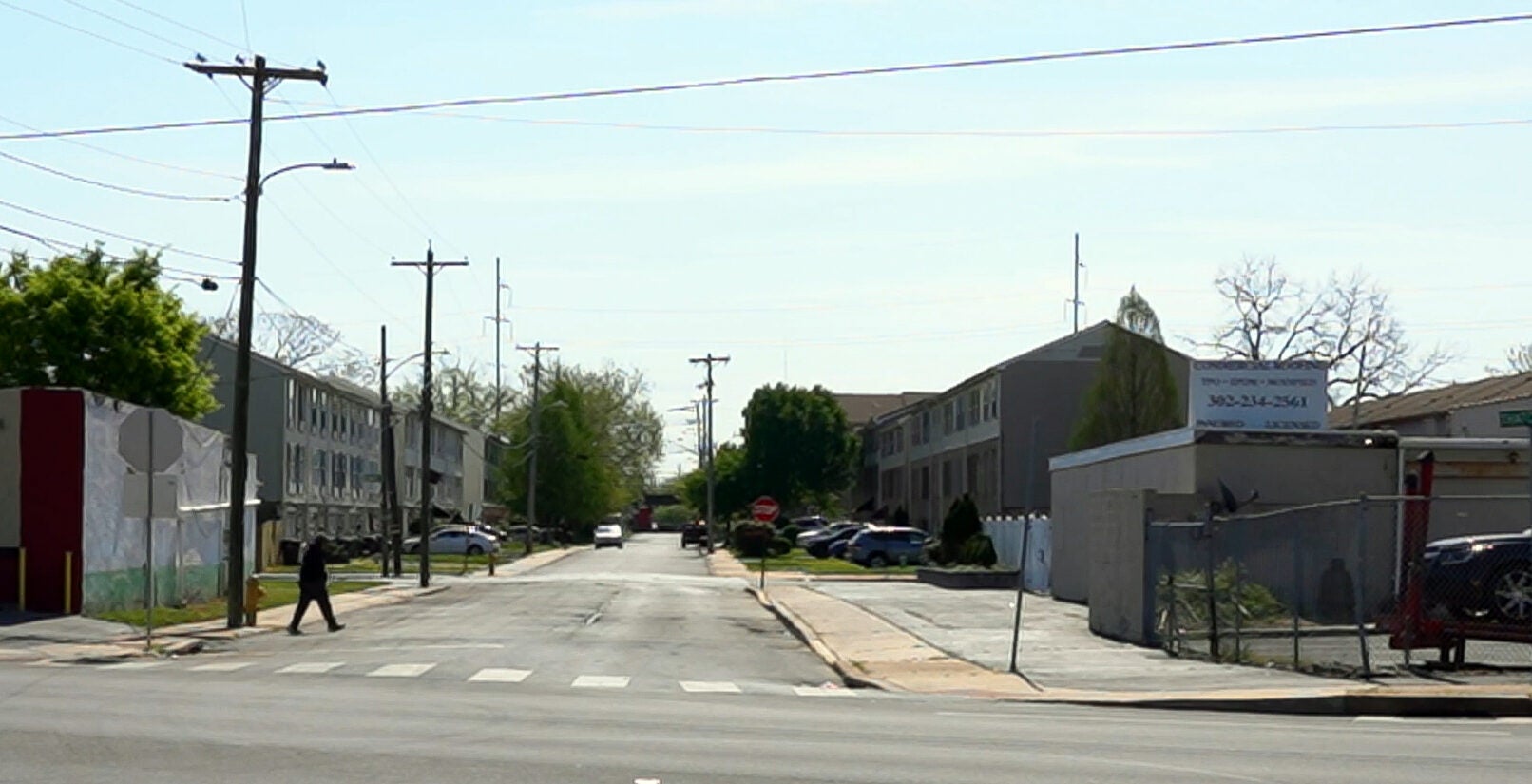
From grand boulevard to poster child for despair
Driving down Northeast Boulevard today, it’s hard to imagine that after World War II, the now-decrepit strip was once a vibrant commercial corridor in Wilmington in the 1940s and 50s.
On Wilmington’s northern outskirts, the hub was the Merchandise Mart, a sprawling complex anchored by the Strawbridge & Clothier department store. Nearby was a bowling alley and movie theater.
Once on the boulevard, baseball fans flocked to Wilmington Park. That’s where the Blue Rocks, then the farm team of the Philadelphia Phillies and Athletics, played. Sometimes, major league clubs had exhibition games there, featuring future Hall of Famers such as New York Yankees’ catcher Yogi Berra. The University of Delaware also played its home football games there.
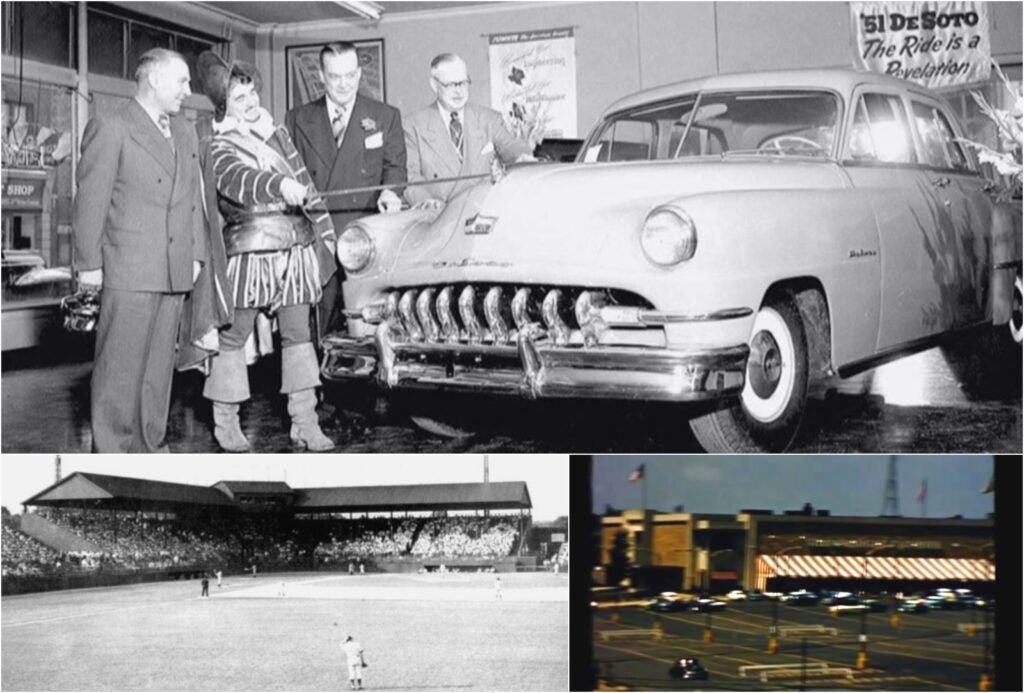
Swank car showrooms, eateries and nightclubs graced the boulevard that snaked through the East Side and into the downtown of Wilmington, a chemical and shipbuilding center which in the late 1940s was America’s 75th largest city. The boulevard also was a center of industry, with a Pepsi bottling plant, and plumbing and glass manufacturing factories.
After World War II, two massive public housing neighborhoods for returning veterans, Riverside and Eastlake, were built. There were schools, ballfields and a gigantic swimming pool in a picturesque park.
“This community has such rich history and I think we really need to start there. We need to revisit how rich it was and not just economically rich, but rich in culture, rich in history, rich in tradition,” Herring said.
“And then certain decisions, whether they be legislative, criminal justice, you know, we could talk about it for days, but eventually it became a community that wasn’t so synonymous with prosperity and thriving.”
Scroll through for slideshow:
The demise began in the 1950s, when Wilmingtonians began moving en masse to new suburban developments.
The ballpark closed and the Blue Rocks folded, though the team would later be resurrected on the other end of the city at the Wilmington Riverfront in the 1990s and now is a farm team for the Washington Nationals.
And when Martin Luther King Jr. was assassinated in 1968 and riots ravaged Wilmington, even more people moved away.
That same year Concord Mall opened west of town, as did the stretch of I-95 that cut through the heart of Wilmington, which meant drivers didn’t need to use Northeast Boulevard as much anymore.

The Merchandise Mart began declining. Dealerships closed. Restaurants and other stores evaporated.
From 1950 to 1980, Wilmington’s population fell from 110,000 to 70,000, a 36% plummet, according to U.S. Census estimates. Today, barely 72,000 people live in Delaware’s largest city, and only a couple thousand are in the Riverside area.
‘Makes you wonder how and why that could happen’
Riverside and Eastlake as well as the boulevard that cut through them continued to decay over the decades.
In the mid-1990s, rising crime even drove the city to install a police mini-station inside a former home in Riverside. One section of Eastlake became so notorious for shootings and open drug dealing that it became known citywide as “The Bucket.”
Scroll through for slideshow:
Markevis Gideon lived in Riverside as a child in the 1980s.
“It was a lot of crime, a lot of violence for me,” Gideon recalled recently. “For me, when I got punished, I had to sit on the front steps to try to be acclimated with the environment. But it was something I just thoroughly didn’t enjoy. I hated it.”
Wenona Sutton of REACH Riverside grew up in the Bronx, which is perhaps New York City’s roughest borough, but was stunned by life in this part of Wilmington when she arrived a few years ago.
“One of the saddest things I saw when I came in this area was the Riverside housing community,” Sutton recalled. “There are boarded-up homes, living conditions that are a norm for community members that should not have been a norm.”
“And then when you hear the stories of how long this community has been sitting and how long help has not come, it just really makes you wonder how and why something like that could happen.”

City leaders embrace ‘Purpose Built’ model
Two decades ago, though, developers tore down and rebuilt Eastlake, across the boulevard from Riverside.
Although no comprehensive project to revitalize the entire area took place, Eastlake’s transformation did become somewhat of a delayed catalyst for Riverside’s rebirth in recent years.
“What we saw in Eastlake was that it’s possible, right?” Herring said recently. “A mixed income community in a community that used to be notorious for crime and poverty. And so the work that we’re doing right across the boulevard, we believe, is going to highly complement what was done in Eastlake.”
The other seeds of rebirth were planted around the turn of the 21st century when EastSide Charter School opened on the site of a long-mothballed public school that borders Riverside.
When the students at EastSide struggled, school leaders sought ways to improve their performance.
They studied a housing- and education-focused initiative that had dramatically revitalized one impoverished area in Atlanta and was being replicated in New Orleans, Tulsa, Birmingham, Omaha and other cities.
Known as Purpose Built Communities, the redevelopments are funded with a mix of tax credits and public and private investment, plus unrelenting will.

Among Purpose Built’s financial backers is billionaire Omaha resident Warren Buffett. During a 2017 Purpose Built forum, the CEO of the Berkshire Hathaway investment company raved about the Atlanta project, which revitalized an area where barely 1 in 10 people had a job.
“There hadn’t been a building permit issued in 30 years,” Buffett told the audience. “The fifth graders — 5% were reading at grade level. It was just a disaster.”
But after several years of investment, planning, construction, and collaboration, Buffett said, “there’s full employment. There’s a mixture of incomes. There’s a mixture of races. The school scores in the top 10 of that area.”
In 2014, Mike Purzycki joined a contingent from Wilmington that visited Atlanta to see that city’s revitalized area, also known as East Lake. At the time Purzycki headed the public-private group redeveloping Wilmington’s riverfront, where the new Blue Rocks stadium is an anchor. Purzycki was elected mayor in 2016 and is finishing up his second term.
“We came back pretty enthralled by this whole concept of building a project, but building supports and community centers and schools and the works,’’ Purzycki said while standing on Bowers Street, where the old Riverside ends and the new Imani Village begins.
“It’s a magnificent example of what happens when people have this indomitable will that says we are going to do this project. And all you gotta do is look around here and if you are not impressed, you just don’t have a pulse.”
Scroll through for slideshow:
In Imani Village, ‘every day I count my blessings’
By 2020, Wilmington’s Purpose Built model got the green light for Riverside, where the stately units of Imani Village have been going up at a dizzying pace.
In a few years there will be about 700 homes, some rented with federal subsidies for tenants, others going for market prices, and perhaps some for sale.
Lorrie Dennis was one of the first residents. She lived for years in the old Riverside, and couldn’t be happier.
“I think it’s beautiful what they’re doing. I really do. I think it’s going to be really different from over there,” Dennis said, pointing to the old homes across the street. “So every day I wake up, I count my blessings and I thank God for what I got.”
Most of the old Riverside still stands nearly four years after construction began, and some 200 people still live here. The brick structures will eventually be torn down for Imani Village homes.
Lalika Williams lives in old Riverside and hopes to get a place in Imani Village. She calls their towering structures “project mansions” but admits to having mixed emotions.
“I’m just a little sad, a little heartbroken because this is where me and all my friends grew up. I lived here all my life. That’s the only reason. Other than that I’m all for the program,” Williams said.
Scroll through for slideshow:
Maurice Brooks also grew up in Riverside. He worries about residents who won’t qualify for the new homes but said life should be better for those who do.
“I saw them putting a little playground for the kids and a little gazebo,” he said while visiting friends who still live in Riverside. “That’s nice. I think everything they’re doing is nice.”
That was Clarissa Crippen’s reaction when she and her children moved from Riverside to Imani.
Walking through the home, showing off her new kitchen, laundry closet, living room and bedrooms, Crippen was overjoyed, spinning in a circle while flashing a huge smile.
“It’s really big,” she exclaimed. “I’m so excited.”
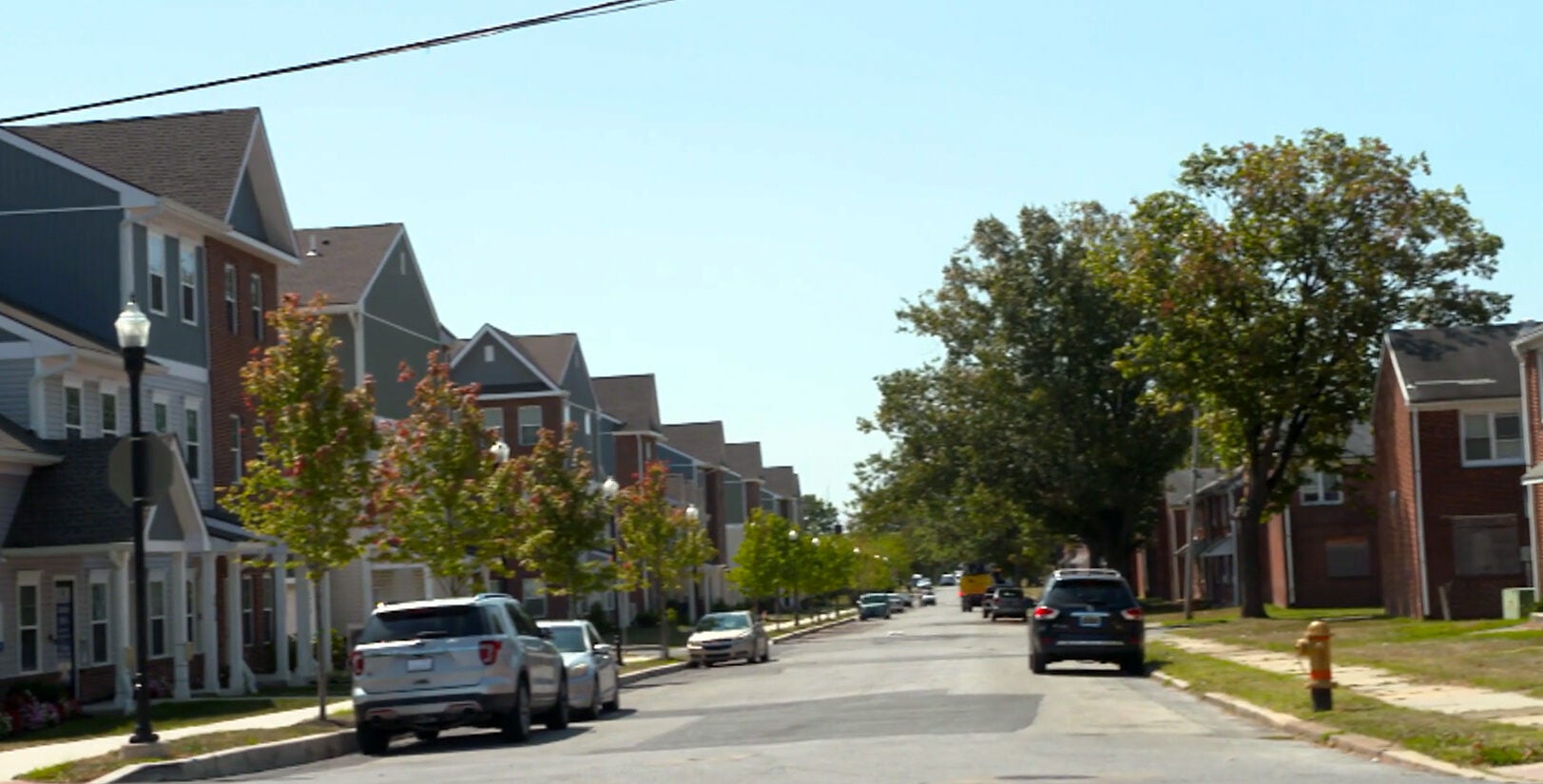
‘We wanted to create a space’ to enrich teens
While stable housing and low unemployment form the backbone of a stable community, residents need places to learn, play, buy groceries, clothes and electronics, or see a doctor.
There must be spots to enjoy meals and cocktails, or just a cup of coffee.
Kids need spaces to kick back, blow off steam, to dance or paint — to dream.
That’s why policymakers, educators and entrepreneurs have moved expeditiously to attract those crucial neighborhood resources to the Riverside area.
The first major project was The Warehouse, which opened in 2021 and has pretty much everything a teenager could want.
Like any traditional rec center, there’s a gymnasium and an outdoor playground.
But there’s so much more in this facility designed to stimulate kids’ minds.
The teens grow hydroponic crops to stock a community refrigerator located at the entrance and which anyone in Riverside can use to feed their family.
A movie theater airs documentaries and other educational shows, and has shelves of books available to read. A dance studio and an art room lets kids explore their creative side.
Teens get culinary lessons in a commercial kitchen. There’s rooms for meetings, job training or tutoring on topics like the benefits of meditation. There’s even an electric school bus to transport kids.
Scroll through for slideshow:
Prominent local politicians like U.S. Sen. Tom Carper have visited. So have Michael Regan, who heads the U.S. Environmental Protection Agency, and U.S. Surgeon General Vivek Murthy.
Beyond the fun stuff, there’s workforce development for professions such as phlebotomy, and events promoting careers in STEM.
Wenona Sutton says The Warehouse fulfills the urgent need to nurture but also inspire the teenagers.
“What we do know is that idle teens lead to interesting problems,” Sutton said with a chuckle. “And so we wanted to make sure that our teens had a safe place to go.”
“Then we wanted to make sure that when they came, that there wasn’t just idle time, that our teens were just not here doing nothing. We wanted to create a space that when they came here, that they were being enriched.”
Riverside has long had the Kingswood Community Center as an anchor for preschoolers and seniors, but nothing to address the serious needs of perhaps the most susceptible population — teens.
“We were not catching the youth in that middle space,’’ she said. “Where they are easily influenced by the community, by negative influences to sort of help them make better decisions so that they can start that great path.”
STEM Hub aims to be model for education
Many of those teens have received their elementary school education down the boulevard at EastSide Charter, led by Aaron Bass.
“We want to make sure that students have purpose-filled lives,’’ Bass said. “That means the students are able to not only graduate from high school and then from college, but the students can then choose where they want to live, choose where they want to work, choose how they want to live.”
But Bass knows EastSide students need more than his staff can provide. To that end, he’s persuaded the corporate, political and philanthropic community to donate more than $25 million to build the state’s first STEM Hub on a lot outside the school’s front door.

The facility will open next year. The lead donor, Chemours chemical company, contributed $4 million. There will be courses in engineering, robotics, coding, chemistry, biology, 3D printing, renewable energy and other STEM-related subjects. EastSide students will take classes there, and residents statewide will also have access.
Bass donned a hard hat at the construction site earlier this year, and raved about the STEM Hub’s transformational potential.
“So what this work does, it means that our community is seen,” Bass said. “It means that the students are valued. It means that the parents have a place they can go to and not just dream dreams for their children, but have visions for themselves.”
Barely a mile away as the crow flies, one-time Chemours CEO Mark Neuman could glimpse Riverside from his downtown office.
Before leaving Chemours earlier this year, Neumann told WHYY News that companies like his need to foster STEM education so industries can hire scientists, engineers, mathematicians and programmers.
“We know the pipeline starts in elementary school, so what can we do in corporate America to drive more excitement about science early on?’’ Newman asked. “Especially in disadvantaged communities where access to STEM education and STEM facilities is really difficult.”
“Our vision is that this could become a model for underprivileged communities where companies like Chemours can go in, and there is a sort of a cookie cutter template that you could say, ‘Hey, we’re going to put one of these here in this community,’ and this will provide facilities and a basis for teachers to get into the next generation excited about science.”
Kingswood getting new $56 million facility
On the south end of Imani Village, there’s yet another new major construction project – a grand new home for Kingswood, Riverside’s heartbeat since the mid-1950s.
It’s long been a sanctuary for older and younger residents.
Adrienne Davis runs Kingswood’s preschool, which has about 100 pupils.

“We are definitely trying to get them kindergarten ready so they are prepared when they go to elementary school,” Davis said. “So we start and support them in learning basic things that they need for school as well as how to be great people in our community.”
Inside the 4-year-old room, the teacher read to students from a book based on a Bob Marley tune during a recent WHYY News visit.
“Rise up this morning, smile with the rising sun, three little birds perched on my doorstep, singing sweet songs of melodies pure and true, singing, this is my message to you,” the teacher recited.
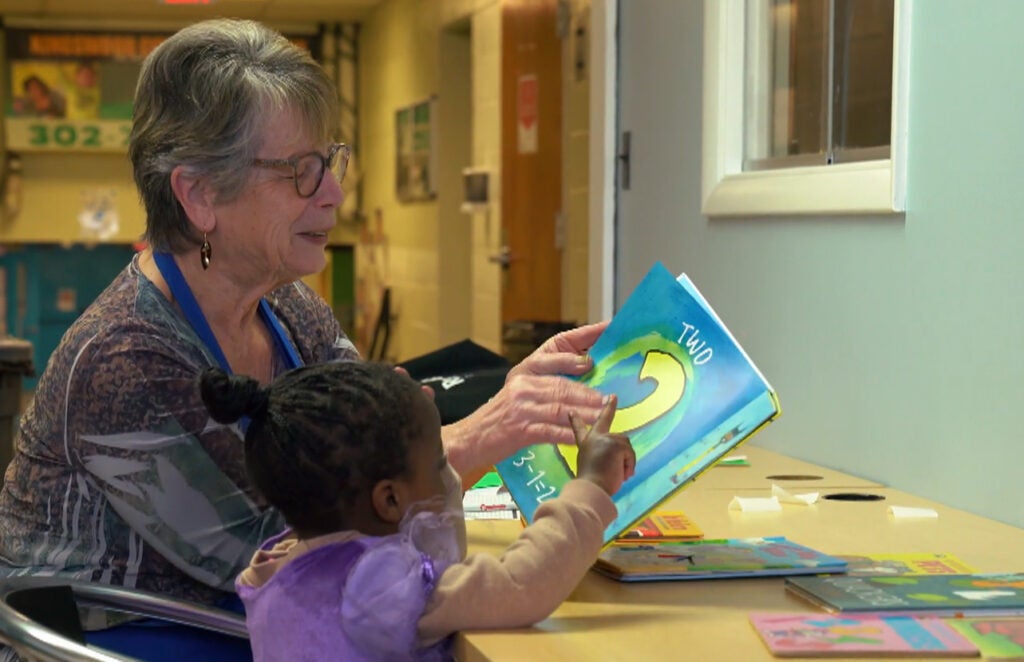
She instructed the kids to sing the bird’s chorus, and they responded with unbridled enthusiasm.
“Don’t worry about a thing,” the children sang. “Cause every little thing’s gonna be all right.”
“Good job, friends,” the teacher praised. “Give yourself a handclap.”
Senior center members playing dominoes in a separate wing of Kingswood said the venue is vital to their lives.
“This is one big family,” one woman said.
“It is. It’s a blessing,” said another. “You get out, get to meet different people. You hear their ups and downs. Some cry. Some are happy, but it brings us all together.”
The seniors can get lunch from the kitchen too. Kingswood also has a garden that also helps stock its own community fridge. There’s a pantry with free canned goods.
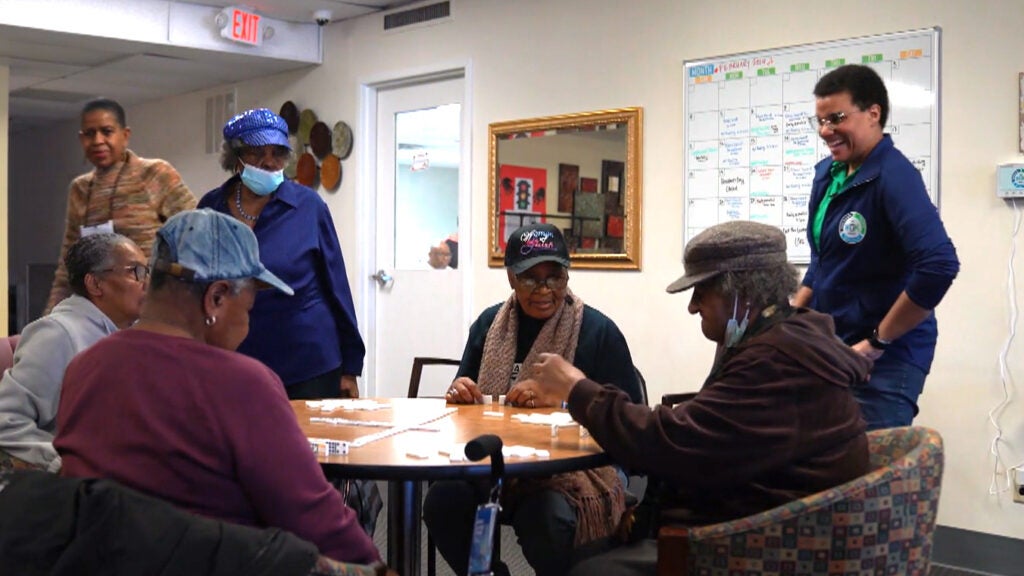
Administrator Tya Pope said Kingswood offers so much more to support families.
“We do events like turkey and food giveaways for Thanksgiving, a toy and coat drive annually, to try to fill in gaps for the folks in the community because that’s the important stuff,” Pope said.
“That stuff that has been often left to the wayside. And so we have a monthly food distribution that we provide through the food bank.”
But this summer, Kingswood began its latest journey — one filled with ambition and promise.
Herring and other officials, including Gov. John Carney, broke ground on a state-of-the-art $56 million center that will be four times bigger than today’s Kingswood.
The second coming of Kingswood will have twice as much child care capacity, a medical center, gymnasium, outdoor sports fields, a commercial kitchen and much more.
“The services and the needs have continued to grow,” Pope said. “We’ve outgrown this space.”Hundreds of biotech employees to work in Wilmington’s downtown.
Scroll through for slideshow:
Produce store fails to survive in food desert
While the new Kingswood center, STEM Hub, The Warehouse for teens and hundreds of new homes bring critical stability to Riverside and its residents, that doesn’t guarantee Northeast Boulevard can be reborn as the thriving commercial corridor they also need.
Yet nearly four years after REACH Riverside began its quest, the strip is the same industrial wasteland and food desert — seemingly resistant to revival.
Exhibit A is The Produce Spot, which sisters Thameenah and Adiyah Davis opened in 2021.
“We absolutely know that this community needs fresh things around here,” Thameenah told WHYY News in the summer of 2023. “Prior to us opening, there wasn’t anything around here. No healthy options, just the Popeye’s [fast-food chicken], Dollar Tree and the corner stores, which we all know is not healthy.”
Thamaneeh was heartened to see Riverside kids come inside with their families.
“They come here more frequently to buy fruits and vegetables, things that their parents didn’t think that they were interested in,” she said then.
The sisters stocked their shelves with colorful greens and other produce, and sold smoothies too.

The Produce Spot also accepted food stamps and did outreach, but generating enough revenue to cover rent and other costs proved formidable. When WHYY News interviewed the Davises at the time, Adiyah sounded defeated.
“You know, we thought coming here where it was a food desert that you know, we would have people breaking down the doors trying to get in, but that’s not the case,” she said. “My sister and I have been here for two years and you know, it’s been a struggle.”
When asked point blank if she expected The Produce Spot to survive, “As of today,’’ Adiyah replied, “absolutely not.”
A few months later, the Produce Spot shuttered.
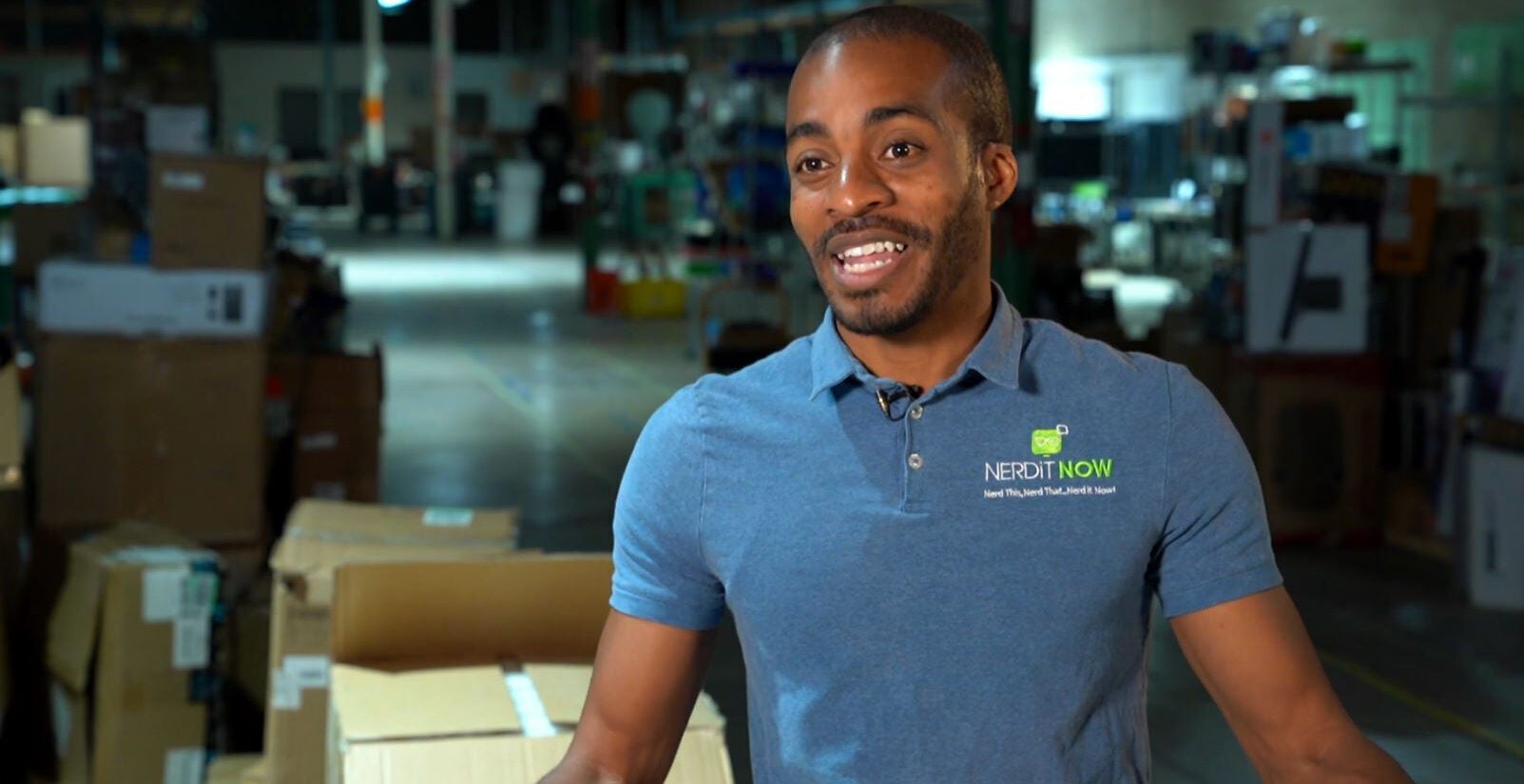
Former resident moves business to Riverside
Next to EastSide Charter, however, an electronics recycling company one block off the boulevard, is having success. It’s called NERDiT NOW, and it’s run by former Riverside resident Markevis Gideon.
NERDiT NOW repurposes used electronic devices. They come mostly from Amazon and other e-commerce vendors who don’t want to resell opened items that customers returned.
“On an average month, we’re getting anywhere between five, six thousand devices,” Gideon said. “The devices can range from AI cat litter to an 85-inch brand new TV. I have no idea what’s coming in. Generally, we do a lot of computers, phones and tablets, but again, the scale is huge.”
Gideon started NERDiT NOW in 2015. He was based outside of Wilmington but started donating hundreds of laptops and Chromebooks to Riverside residents and visitors during events at Kingswood and The Warehouse.
A few years ago, however, Herring leaned on Gideon to move NERDiT Now to Riverside.

“I told him at first, ‘I don’t want to come back,’” Gideon recalled. “But he said, ‘Markevis, you are from this community and you made it out. Now let’s show others how they can do the same thing.’”
“It just made me really rethink, it would be selfish of me to not really consider going back and trying to help in some way, shape or form when I had the resources.”
In 2022, a 50,000-square-foot facility next to Eastside Charter became available and NERDiT NOW took it. The building had previously housed Second Chances Farm, an indoor hydroponic produce business that since 2019 had employed formerly incarcerated people and received widespread acclaim before folding for economic reasons.
NERDiT NOW, however, is making it. There’s currently about 20 employees, and Gideon hopes to expand to 75.
Standing 50 yards from his company’s entrance, facing the new homes of Imani Village and the still-standing structures of old Riverside, Gideon reflected on his odyssey back to his roots.
“Yeah, I look back and I’m like, ‘Wow, our business is there and I grew up here,’ a place I didn’t want to come back to,” Gideon said. “I would never have thought that was gonna happen but I’m proud to be a part of this because it’s going to help build that foundation for everyone.”
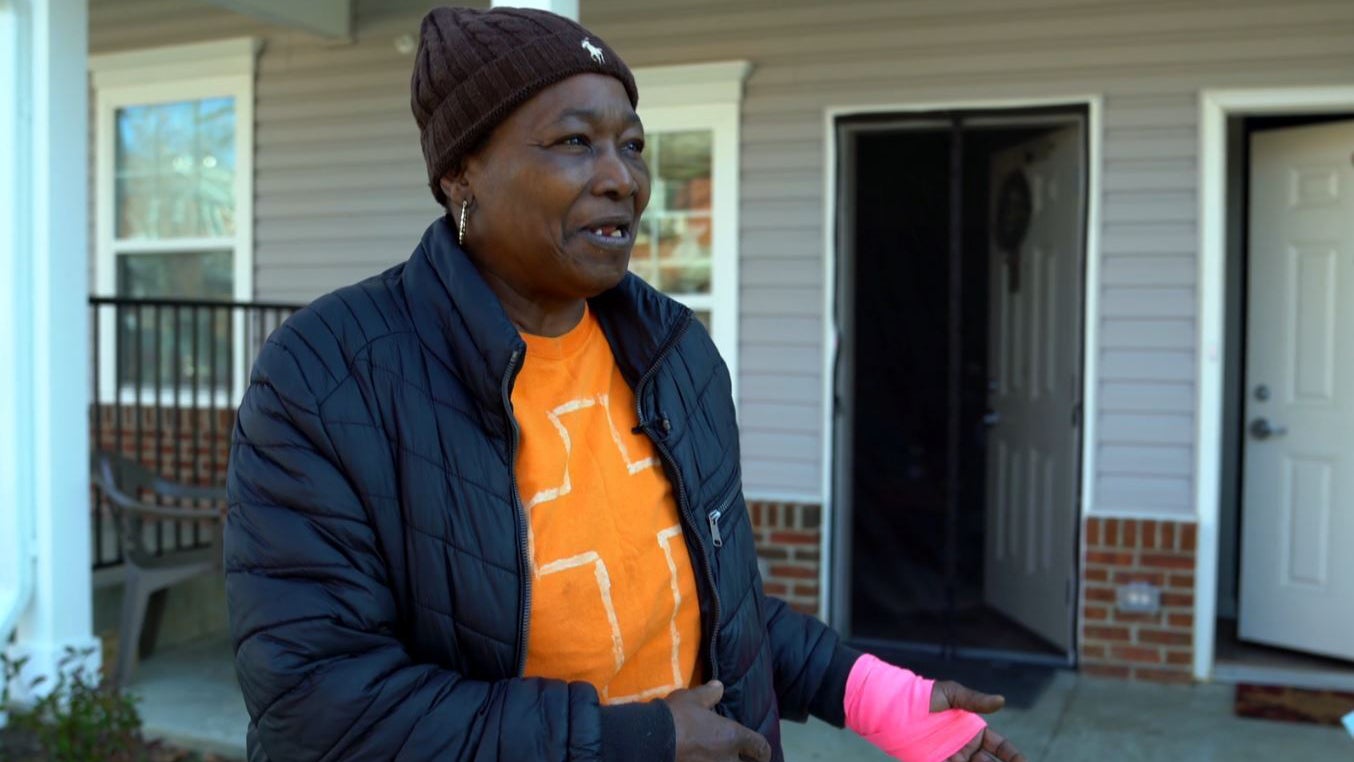
‘Going to remember this was a desolate area’
So the foundation is set, but will Wilmington’s grand experiment succeed?
What will life, education and commerce be like in Riverside and the boulevard in a decade and beyond?
Will this long-forgotten corner of town return to its former glory, or will momentum stagnate?
Despite the obstacles that remain, Logan Herring is more optimistic than ever.
“We have people living in the homes. We have the vision of the new Kingswood community center that will be built. We have the Warehouse, right?” Herring said.
“The fact that we’ve been able to accomplish certain things, milestones, encourages us that we’ll be able to talk about restoring Northeast Boulevard and bringing more homeownership opportunities to the neighborhood. We can fully accomplish it, because we’ve done certain parts of it already.”
EastSide Charter’s Bass is just as bullish. He predicts the current wave of investment in bricks and mortar will create the synergy that convinces companies and entrepreneurs to follow suit.
“As the housing changes, as continued investment in the STEM Hub and teen warehouse and other vital job opportunities are coming about, then you’ll also have people in other businesses that will then want to flock to this area,” the education leader said.
“And so I think with that, you’ll start to see this renaissance really take place because people are having actions that match their belief. And I think that’s what the change will be.”
And should the boulevard once again thrive,
if kids succeed in school,
if supermarkets, banks, coffee shops and doctors’ offices are right around the corner,
if outsiders drive to Riverside for a meal or a night on the town,
if hopelessness becomes a distant memory,
Markevis Gideon looks forward to telling anybody who will listen about the transfiguration.
“Because I’m going to remember what it used to be,” Gideon said.
“I want to tell stories to the community and say, ‘Hey, we got to appreciate this. We’re going to take care of this, because this was a desolate area.’”

Get daily updates from WHYY News!
WHYY is your source for fact-based, in-depth journalism and information. As a nonprofit organization, we rely on financial support from readers like you. Please give today.



